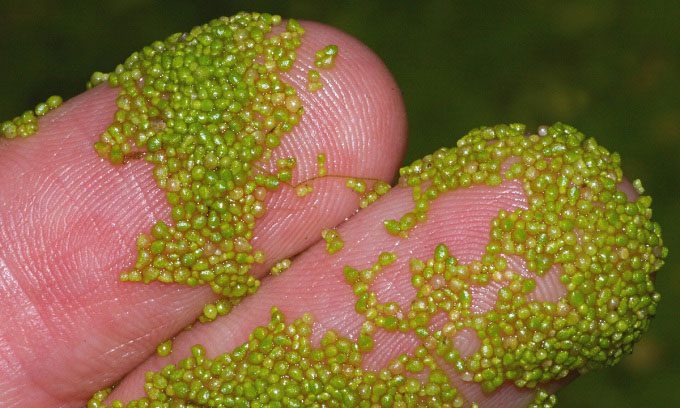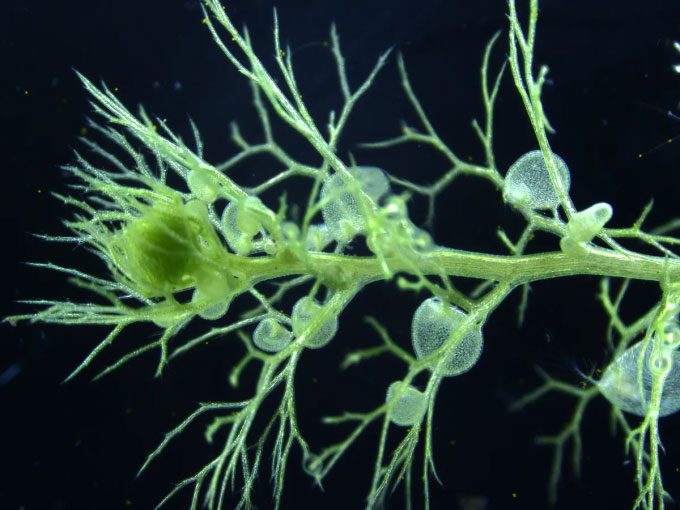Contrary to common belief, plants are not always stationary and can act very quickly, with times measured in milliseconds.
Growth Rate
Previously, bamboo was considered the fastest-growing plant in the world. The Guinness World Records website still notes that some species of bamboo grow at a rate of 0.00003 km/h, adding 91 cm in height each day.
However, recent research points to a new contender for this title: watermeal. Watermeal consists of aquatic plants belonging to the genus Wolffia, which includes the smallest flowering plant in the world. Despite their tiny size, watermeal grows at an astonishing rate. Native to India, Wolffia microscopica can double in size in just 29.3 hours.

Watermeal on a person’s fingertip, each spot smaller than 1 mm is a separate plant. (Photo: Christian Fischer/ESA).
Why do they grow so quickly? Some researchers suggest that the reason is the elimination of the light-dark cycle that typically governs plant growth. “Surprisingly, Wolffia has only half the number of genes regulated by the light-dark cycle compared to other plants. We think this is why they grow so quickly. They are not subjected to the restrictions of timing for growth,” explained Todd Michael, an author of the 2021 study on the growth of Wolffia and a professor at the Salk Institute’s Plant Cell and Molecular Biology Laboratory.
Watermeal also discards several other genes, including those related to protective mechanisms and root development. “It seems they have evolved to focus on uncontrollable rapid growth,” Michael stated.
Sphagnum affine moss releasing spores. (Video: Science News).
Dispersion Rate
Sphagnum moss plays a crucial role in the formation of peat bogs, storing water, providing nutrients, and preventing the decomposition of dead plants. They also propagate very quickly, spreading through spores contained in capsules. In the summer, the spore capsules dry out and contract, creating pressure that causes the capsules to burst and the spores to disperse.
Researchers Joan Edwards and Dwight Whitaker observed this phenomenon in practice with a study on the dispersion of Sphagnum spores published in the journal Science. They found that the cap of the spore capsule ejects in less than 0.01 milliseconds. The spores initially accelerate with a force of up to 36,000 g, whereas the g-force during a Space Shuttle launch is only about 3 g.

Roots of the bladderwort, the fastest carnivorous plant group. (Photo: D. Kucharski K. Kucharska).
Predation Rate
When it comes to carnivorous plants, many people think of the famous Venus flytrap (Dionaea muscipula). However, there is a group of aquatic plants that catches prey even faster. Aquatic bladderworts (genus Utricularia) consume tiny prey, from insect larvae to tadpoles, at an astonishing rate.
In a 2017 study, scientists used high-speed cameras to film the southern bladderwort (Utricularia australis) capturing prey at speeds of up to 4 meters per second, with an acceleration of 2,800 g. When an organism touches the trigger hairs, the plant opens its trapdoor, sucks in the prey, and closes the door. On average, this entire process occurs in just 9 milliseconds.


















































